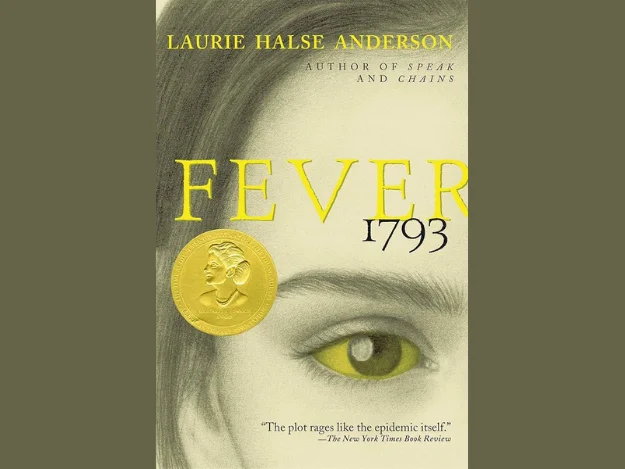
Fever 1793: A Revew
The book Fever 1793 by Laurie Halse Anderson is a historical fiction novel. The story happens in Philadelphia in 1793 when an epidemic of the yellow fever breaks out and is centered around a young girl whose mother owns a coffee shop.
The book is very interesting especially when comparing it with the recent COVID 19 pandemic.The way the government responds, the way people who can flee to the countryside and the disagreements in how best to deal with the sickness all reflect what happened with COVID 19. The book also addresses in an interesting way how people felt towards African Americans and how they were treated. The central role that the Free African American Society plays in treating the pandemic is at the same time awful and amazing. It is awful because they are only implicated because Dr Benjamin Rush believes that African Americans are immune to the disease - sadly it turns out they are not and so many end up getting sick and dying. The way the Free African American Society is implicated is, on the other hand, absolutely amazing because even though they were not treated as equals they were willing to risk their lives to help others and they probably saved many.
The main character Matilda “Mattie” Cook is very interesting. She is, at the beginning, very lazy and unwilling to do anything, and transforms into someone who decides to not sell the coffee shop and instead run it on her own. Mattie has to change to survive because if she wants to find food and water to save her grandfather, her dear little Nell or the two young twins she needs to be brave and tough. Although Mattie shows outstanding bravery she can only dream of comparing herself to Eliza and the rest of the Free African American Society the bravery they all show is amazing - going into houses of people who have been sick and staying out late even though there are robbers. When, on page 180, Mattie is staying with them and Eliza stays out late, Mattie asks where she is and Mother Smith answers her, “The pain doesn’t go away at sundown, Eliza will stay where she is needed.” which shows exceptional commitment. This commitment is reinforced by the fact that although originally they thought that African Americans couldn’t get sick with yellow fever they now know that they can and some people have died; this is shown on page 176 when Eliza says,“If only the doctors had been right”. The Free African American Society shows everyone how they should behave and demonstrates a perfect example of selflessness.
The book is very emotional but the most emotional of all the scenes is, for me, when she finds Nell and Nell says, ”Mama’s broken too”. This line was really impactful and really hit home because although we are told that the orphanage is overflowing it’s the first time we actually see a young child with no parents as well as the fact it’s the first time a young child is directly involved it also his home because Nell can’t understand what is happening and answers with childish innocence. I found that The way MAttie acts throughout the book was realistic and I thought multiple times that even though I know what the consequences of her actions would be I wouldn’t have done better.
The book has great historical accuracy in description of what the characters are wearing, how they act towards each other, and what they consider proper or improper. I wish that, although it isn’t the focus of the book , we had known a little bit more of what the Free African American Society did during the epidemic, how they were impacted during and after the epidemic and wether perhaps people started respecting them more. I definitely recommend this book to anyone and everyone so long as they can cope with the sad bits.